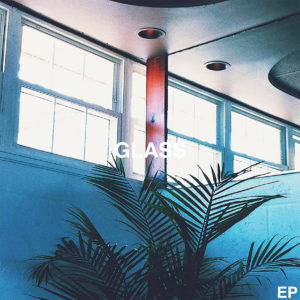As ordinary people living our lives in 2018, I think that all too often we let ourselves slip into a nasty habit of dwelling in garbage. For as much as there is to complain about (and, trust me, I recognize that it’s difficult to navigate Facebook for more than two seconds without wanting to bang your head against a wall) there is just as much good we could instead focus on. And that’s what our energy should be directed towards.
 Near the start of 2018, I was convicted that we shouldn’t waste our energy on things we cannot control. Unless you and you alone are responsible for something that goes wrong, don’t waste valuable time focusing on the issue. Did someone cut in line in the dining hall? Is it unbearably warm and humid outside? Cell phone not running as fast as it used to? None of that is actually your fault. To live a better life we must let go of these everyday (more or less) annoyances and intentionally choosing to focus on the good.
Near the start of 2018, I was convicted that we shouldn’t waste our energy on things we cannot control. Unless you and you alone are responsible for something that goes wrong, don’t waste valuable time focusing on the issue. Did someone cut in line in the dining hall? Is it unbearably warm and humid outside? Cell phone not running as fast as it used to? None of that is actually your fault. To live a better life we must let go of these everyday (more or less) annoyances and intentionally choosing to focus on the good.
Now, I’m not saying that everyone should stop caring about everything bad that happens. “I failed that test because I didn’t study? Who cares? Yay!” No. The glory of not wasting emotional energy on all the stuff you can’t control is that now there’s an abundance of energy to take care of what is truly valuable and worthwhile. A big part of this mindset is grounded in self-care and allowing there to be time and energy to step away from others and take genuine care for yourself. This isn’t a matter of being willfully ignorant to the problems in the world, large or small, but an effort of choosing to take a stand against letting it all affect you personally.
If nothing else, day-to-day life feels a lot better and brighter when hope is on the mind instead of misery. I’ve found that all the small problems I face tend to make my outlook cloudy and skewed. Choosing to have hope reveals all of life’s small treasures that too often go missed. And hope is just as contagious as despair; in a world of conflict and hatred, now is the time that we need hope the most. We need to show love and be loved, and we can’t do that when we complain about how hot it is outside or how much we hate Mondays. We’re wasting our energy when we should be putting it toward loving one another.
This is a message for the first year student who is struggle to adjust to college life; for the senior too terrified to think past graduation, for staff, faculty, and parents back home. For everyone, really. Dwell on the good, and don’t waste energy on the bad. It takes effort and definitely won’t come easy, but think of how better the world could be if we all lived a little bit more positively.
Jared is a junior majoring in Communication.


 All three are producers and songwriters, and the roles they play in the group are mostly shared among all three. When they play live, though, Cam acts as lead singer and keyboard, Cole does background vocals and synth and drum pad, Lars plays guitar and synth as well. “There’s so much in our music,” said Lars, “There’s too much for just three people to make with real instruments so we would have to use backtracks.” Even though nowadays they’re separated because of college, they maintain their work through Facetime calls and a lot of sharing files on Google Drive. Cam and Cole will send an idea for a track, Lars will make his tweaks and adjustments before sending it back, and then the process repeats. It’s back-and-forth until they decide it’s perfect. Although they haven’t played any shows together as a full band yet, they’re working on booking shows for the near future. Lars also recently played in a coffeehouse and asked a few friends to assist him, although the performance was more stripped-back without Cam and Cole.
All three are producers and songwriters, and the roles they play in the group are mostly shared among all three. When they play live, though, Cam acts as lead singer and keyboard, Cole does background vocals and synth and drum pad, Lars plays guitar and synth as well. “There’s so much in our music,” said Lars, “There’s too much for just three people to make with real instruments so we would have to use backtracks.” Even though nowadays they’re separated because of college, they maintain their work through Facetime calls and a lot of sharing files on Google Drive. Cam and Cole will send an idea for a track, Lars will make his tweaks and adjustments before sending it back, and then the process repeats. It’s back-and-forth until they decide it’s perfect. Although they haven’t played any shows together as a full band yet, they’re working on booking shows for the near future. Lars also recently played in a coffeehouse and asked a few friends to assist him, although the performance was more stripped-back without Cam and Cole.  After the dramatic reveal at the end of
After the dramatic reveal at the end of 
 We, as a society, aren’t holding men to the standard that we could be. Why do we continue to ask women “what did you do to provoke the attack?” when we should really be asking men “what could you have done to prevent the attack?” And the problem is rooted deeper than just physical attacks on women. We all, men and women alike, need to stop treating women as inferior beings only obsessed with the latest hairstyles or fashions. We need to stop using gendered insults that imply women are weaker and lesser, and we need to start teaching boys and girls at a much younger age that girls should be valued for more than her looks.
We, as a society, aren’t holding men to the standard that we could be. Why do we continue to ask women “what did you do to provoke the attack?” when we should really be asking men “what could you have done to prevent the attack?” And the problem is rooted deeper than just physical attacks on women. We all, men and women alike, need to stop treating women as inferior beings only obsessed with the latest hairstyles or fashions. We need to stop using gendered insults that imply women are weaker and lesser, and we need to start teaching boys and girls at a much younger age that girls should be valued for more than her looks. After attending Houghton for three full years, Johnson took some time off from campus. It was during this time that she took the opportunity to play at various smaller stages and shows, and later taking her spring semester at the University of Indianapolis to further study writing and poetry. Now, however, she is back here at Houghton for one last semester before graduation.
After attending Houghton for three full years, Johnson took some time off from campus. It was during this time that she took the opportunity to play at various smaller stages and shows, and later taking her spring semester at the University of Indianapolis to further study writing and poetry. Now, however, she is back here at Houghton for one last semester before graduation.